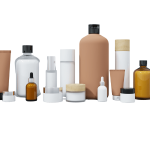Health Canada Notice: Classification of Topical Products Containing Human-Derived Exosomes, Extracellular Vesicles, and Cell-Conditioned Media
Date Issued: August 14, 2025
Purpose: To clarify Health Canada’s regulatory stance on topical products containing human-derived biological substances and guide stakeholders on compliance with the Food and Drugs Act (FDA).
Health Canada has issued a notice to communicate its approach to classifying topical products that contain human-derived exosomes, extracellular vesicles, and/or cell-conditioned media. These substances are increasingly used in cosmetic and therapeutic products, prompting the need for clear regulatory boundaries.
Key Definitions Under the FDA
- Cosmetic: A substance or mixture intended for cleansing, improving, or altering the complexion, skin, hair, or teeth, including deodorants and perfumes.
- Drug: A substance or mixture intended for diagnosing, treating, mitigating, or preventing disease, or modifying organic functions in humans or animals.
Scope of the Notice
This notice applies specifically to topical products—those applied externally to the body—that contain human-derived biological materials. These include:
- Exosomes: Membrane-bound vesicles secreted by cells, often used for their regenerative or signaling properties.
- Extracellular Vesicles: Broader category including exosomes, involved in intercellular communication.
- Cell-Conditioned Media: Fluid collected from cultured cells, containing secreted factors including exosomes.
Classification Considerations
Health Canada uses a multi-factorial approach to determine whether a product is a drug or a cosmetic, based on:
- Product Representation
If a product is marketed with claims of treating, diagnosing, or modifying bodily functions, it is classified as a drug. This includes therapeutic claims, biological effects, or comparisons to medical procedures. - Level of Action
Products that require systemic absorption or are administered via injection (excluding tattoo ink) are not considered cosmetics. Cosmetics must act locally and transiently, without penetrating below the skin. - Composition
If the ingredients themselves are inherently therapeutic or pharmacologically active, the product is classified as a drug. For example, tretinoin and corticosteroids are considered “inherent drugs.”
Products containing human-derived exosomes or similar substances are likely to be classified as drugs if they:
- Claim regenerative or therapeutic effects.
- Are used with microneedling or other methods that facilitate absorption.
- Contain biologically active components with systemic effects.
Regulatory Implications
Products classified as drugs must comply with the Food and Drug Regulations, requiring:
- A Notice of Compliance (NOC).
- A Drug Identification Number (DIN).
- Authorization for clinical trials via a No Objection Letter (NOL).
Products classified as cosmetics must comply with the Cosmetic Regulations, including:
- Submission of a Cosmetic Notification Form within 10 days of first sale.
- Ensuring safety and compliance with labeling and advertising standards.
Health Canada warns against the use of unauthorized products, citing risks such as:
- Unsubstantiated therapeutic claims.
- Toxic effects.
- Transmission of infectious agents from human-derived materials.
Consultation Period
A 75-day consultation period is open for stakeholders to submit feedback, scientific data, or concerns regarding the classification of these products.
Expanded Insights from the Cosmetic-Drug Interface Guidance Document
Health Canada’s Guidance Document: Classification of Products at the Cosmetic-Drug Interface provides a structured framework for classifying products that blur the line between cosmetics and drugs.
Guiding Principles
- Public health protection is the primary goal.
- Classification is based on representation and composition, not solely on risk.
- Products are assessed case-by-case, with no grandfathering based on previous classifications.
Key Criteria for Classification
- Representation for Sale
Claims made on packaging, advertising, or inserts are central. Even implied claims can influence classification. For example:- “Reduces wrinkles” may be cosmetic.
- “Stimulates collagen production” may be drug-related.
- Composition
The presence and concentration of active ingredients matter. Some ingredients (e.g., salicylic acid) may be used in both cosmetics and drugs, depending on their concentration and intended effect. - Level of Action
Products that act below the skin or require systemic absorption are typically classified as drugs. Cosmetics are expected to act superficially. - Other Considerations
- Route of administration (e.g., injection vs. topical).
- Intended user population (e.g., general public vs. patients).
- Scientific evidence supporting claims or mechanisms of action.
Examples of Products at the Interface
- Anti-dandruff shampoos: May be cosmetic or drug depending on active ingredients.
- Skin whiteners: Often classified as drugs due to their biological effects.
- Antiperspirants: Can be either, depending on claims and composition.
Conclusion
Health Canada’s notice and guidance document together provide a comprehensive framework for classifying topical products containing human-derived biological substances. The classification hinges on how the product is represented, its composition, and its mechanism of action. Stakeholders must carefully evaluate these factors to ensure compliance and avoid regulatory pitfalls.
For more details, you can view the full Health Canada Notice and the Guidance Document.
Need help navigating cosmetic-drug classifications or preparing compliant submissions?
📞 Contact Dell Tech today for expert guidance on cosmetic and drug compliance or explore our related blogs on medical devices and biologic regulations.
DELL TECH HAS PROVIDED PROFESSIONAL, CONFIDENTIAL CONSULTING SERVICES TO THE SPECIALTY CHEMICAL INDUSTRY IN CANADA, THE USA, EUROPE AND ASIA FOR THE LAST 40 YEARS.





